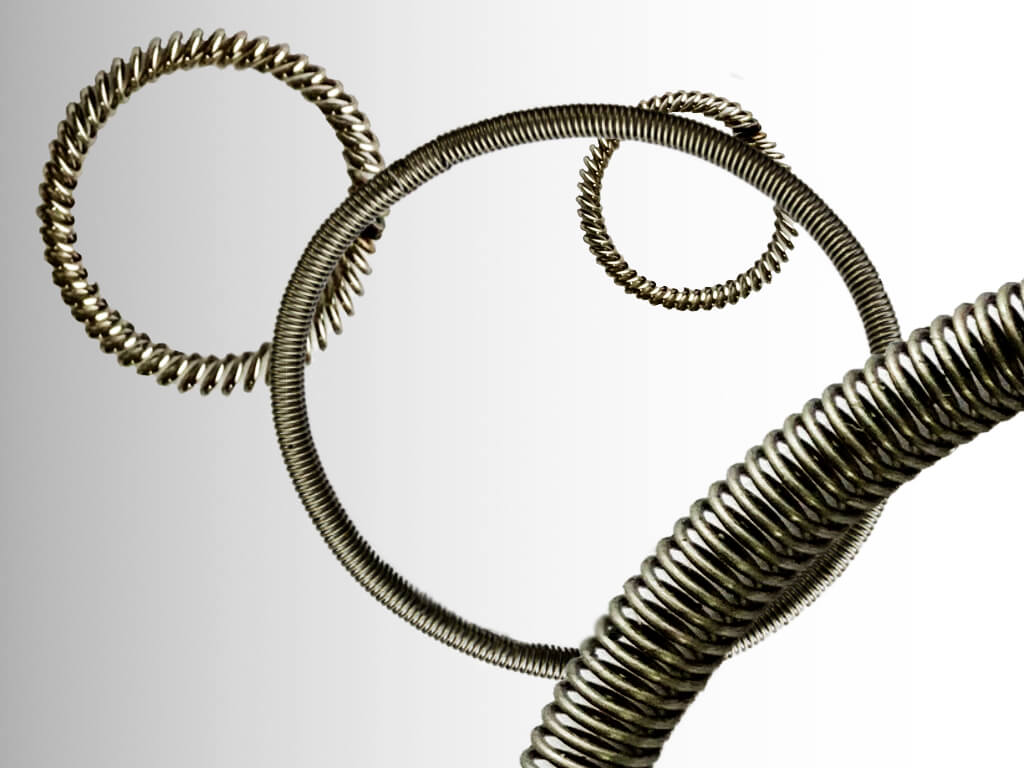Here are answers to seven of the most common questions asked about canted coil springs.
Where Are Canted Coil Springs Used?
Canted coil springs can be used in many different ways, but many are not aware of exactly how versatile they are. In the medical industry, they are used to shield equipment from crosstalk that could compromise the integrity of data. The automotive industry depends on canted coil springs to achieve solid mechanical and electrical connections while reducing weight and minimizing the complexity of assemblies.
In the oil and gas industry, they are used to achieve both electrical and mechanical connections in the rugged environment of downhole tools. Canted coil springs protect sensitive equipment from lightning strikes in the aerospace industry. And those are just a few examples of how they can be used.
What is a Canted Coil Spring?
Traditional springs have all the coils perpendicular to their longitudinal axis. Canted coil springs, on the other hand, have the individual coils parallel to each other and at an angle to the longitudinal axis. Because of how the coils are oriented, these springs can effectively serve a wide range of uses that traditional springs cannot.
Are There Any Other Names for a Canted Coil Spring?
Yes, as a matter of face there are. Canted coil springs are also called slant coil springs and cant coil springs, both in reference to the angle (or cant) at which the coils are parallel to each other.
What Makes a Canted Coil Spring Special?
Because of the cant of the coils, these springs have a flat load curve when compressed–which is rather unusual for a spring. This means that the load generated as these springs are compressed is predictable through their wide deflection range.
What Can Canted Coil Springs be Used For?
Canted coil springs have four specific areas of application in which they excel: energizers for spring-energized seals, mechanical connectors, multi-point electrical connectors, and EMI/RF shielding.
Spring-Energized Seals
Canted coil springs are one of the options when specifying a spring-energized seal. Spring-energized seals provide outstanding performance in spite of issues such as uneven mating surface, hardware gaps, runout, eccentricity, out of roundness, and seal lip wear.
In that context of spring-energized seals, canted coil springs generate a flat load curve that in turn keeps friction at a predictable, constant level. This is extremely important in sealing applications for which friction and torque are critical to the functionality of a seal. In addition, canted coils do not experience compression set. Canted coil spring energizers work best when there are moderate to high speeds involved and are ideal for situations where friction needs to be highly controlled.
Mechanical Connectors
First, canted coil springs work well for latching, or fastening two parts together so they can still be disconnected when needed. They also work extremely well at locking, where two parts are permanently “locked” together. Holding is another task for which canted coil springs excel: two parts can be aligned and retained, but with sliding possible. Sliding is highly controlled by spring force generated when the canted coil spring is deformed.
In this type of application, canted coil springs can be fine tuned to achieve highly specific insertion and removal forces. This is made possible by the nearly constant spring force that these springs generate over their deformation range.
EMI/RF Shielding
One of the more interesting applications of canted coil springs is their ability to provide EMI/RF shielding. Their electrical properties can be adjusted to meet specific impedance requirements to achieve optimal shielding for certain ranges of interference, including both conductive and radiated. And they work extremely well at shielding from crosstalk.
These springs can easily adapt to even the most uneven and irregular shapes, allowing them to provide a consistent level of shielding, and can be used with connect/disconnect assemblies, waveguide flanges, rectangular electronics enclosures, and both radial and coax connectors.
Multi-point Electrical Conductors
Canted coil springs can also serve as multi-point electrical conductors. Because surface area provided by the canted coils, they provide a cooler operating temperature which can be critical in certain designs, including those where space is highly limited. Canted coil springs can serve as both conductors and grounds, in both static and dynamic applications. Their multi-point contact system means they can keep electrical contact even in extremely harsh conditions, including those where vibration and shock are common.
What Kind of Materials Are Canted Coil Springs Available In?
The three most common materials for canted coil springs are:
- Hastelloy
- Inconel
- Elgiloy
- 300 Series Stainless Steel (e.g., 316, 316L, 302)
- Copper alloys
In addition, they can be nickel, silver, or gold plated if needed.
If there is going to be extremely high temperatures and/or exposure to corrosive media, Elgiloy is typically recommended. For shielding or use as a multi-point conductor, stainless steel and copper alloys work extremely well.
What Kind of Options Are Available for Canted Coil Springs?
The basic options for canted coil springs outside of those related to materials are …
- Wire diameter
- Coil size (width and height)
- Coil cant angle
- Number of independent coils
- Inner and outer diameter of the spring
By adjusting these parameters and material selection, specific performance goals can be achieved.
Conclusion
Canted coil springs are useful in so many different applications, and their performance is fully proven in the field. Whether you need highly reliable spring-energized seals for use in vacuum conditions, locking components for orthopedic implants, a way to protect rectangular electronics enclosure from a specific range of interference, or a multipoint conductor that also serves as a latching connector, canted coil springs are an excellent option.
And remember that Advanced EMC offers FlexForceTM canted coil springs. Our engineers can work with you to find the right combination of characteristics and properties to meet the needs of your application. Contact us today!

